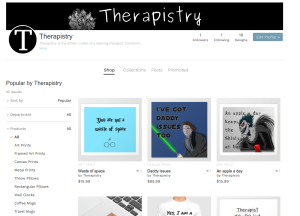Hello all!
After having been job searching for a while, I believe that I could be of use to other professionals in the same position.
The general recommendations and learnings I will share in this post come from the last 9 months of active job search + 3 years of research for opportunities specific to the city of Chicago. It is not a miracle, it is not the only way, it is definitely not a magical solution. Bellow, you will also find a comprehensive list of Chicago based agencies and employers for therapists.
The job seeking candidate would be someone with a master’s level training in counseling. In Illinois, someone eligible or who is an LPC (Licensed Professional Counselor). It may also be helpful to social workers, psychologists, and some bachelor level graduates who are looking for behavioral health positions.
Let’s get to it!
Where to start: Specify what you want
Because the field may be really wide in terms of ways to practice I would say the first thing is to know what you want to do. Even if there isn’t a niche or a population with whom you would want to work, try and concrete what type of work is of your interest. As an entry-level therapist, some basic questions can be these:
Do I want to work in the community or in an office setting?
Do I want to work for a social service agency or for a private company?
Do I want to work with children or adults or both?
Is there any specific population that I DON’T want to work with?
Work environment
You are no longer in school, and this is not your internship. Know your worth and know what you are willing to sacrifice and what not. In my case, I knew that I did not want to drive while at work, I did not want to do community work and I did not want to do nights. I was, however, okay with working evenings and weekends, and driving a little further if the agency was worth the while. And it is important that you know these things because they are going to be part of so many hours of your life.
Types of positions
In relation to what I was saying above, there is a variety of positions that you will read about and be offered. What can we do and what is out of our scope?
Doable
It may be needed that you work some evenings or weekends.
Some case management is to be expected as well, but not as the main focus of your work.
Having a large caseload and doing many hours may be needed.
Undoable
We cannot do therapy with sleeping people, so if it’s a night shift, you are just a technician. Please don’t hire someone with a maser’s to do nanny work.
Full time on the phone counseling, not completely undoable, but be suspicious.
Positions that are described with action words like assist, organize, administer usually belong to jobs bellow master’s level.
Use Glassdoor
This is not only in terms of how Glassdoor can help you, but how you can help others. It is important to share our salaries and experiences with other colleagues, as that is the best way we can assure that we are treated fairly.
If you haven’t done so yet, submit your salary anonymously and help others! I have previously shared my experiences while going through the interview processes so that people know what to expect.
Networking
Sure, this is the trick that everybody knows but nobody wants to follow. There are a thousand tricks in regards to this topic that you can find anywhere else, but I won’t go there.
Specific to Chicago, I feel like there are so many fairs. There are health and wellness fairs, student and intern fairs, job fairs, cultural fairs… Most of the times the same group of employers will be there, trying to know and hire recent graduates. Take your resumes or business cards with you and talk to people about what they are looking for. Shoot them an email that night thanking them for their time.
Get trained, licensed, and certified
This is something that we should all be doing regardless, but that will also differentiate you from other candidates. Especially if you are interested in any of the “trendy therapies” like DBT or ACT, show that you have trained in those areas.
At the same time, complete your certification (NCC) or licensure (LPC) so that you are more marketable. Even if not completely required, employers and recruiters value the clarity of those certifications when looking for candidates.
Spanish speaking counselors!
Know your worth! I have kept hearing over an over about how great of a need there is for Spanish speaking counselors. However, because of obvious discriminatory reasons, I believe there is a higher chance that a Latina therapist is underpaid and underemployed. So, overall, know your worth and go for it.
The real meat
Okay, I hear you saying, “all of this is great but where do I apply?” Don’t you worry, I got you. Here you will be able to download the list of my most thorough research.
This list includes many Chicago based agencies that will hire mental health clinicians. You will find links to their career page and sometimes a link to their Glassdoor page. These are not all of them but are some of the most relevant. Review each to see what they are looking for and if it fits with what you want.
So that’s it! I hope this helps you and if you know someone who is job searching, please share it with them!
And as always, contact me if you have any comments or questions.
Donate 🙂
Do you want to support my work? Click here to learn more!




